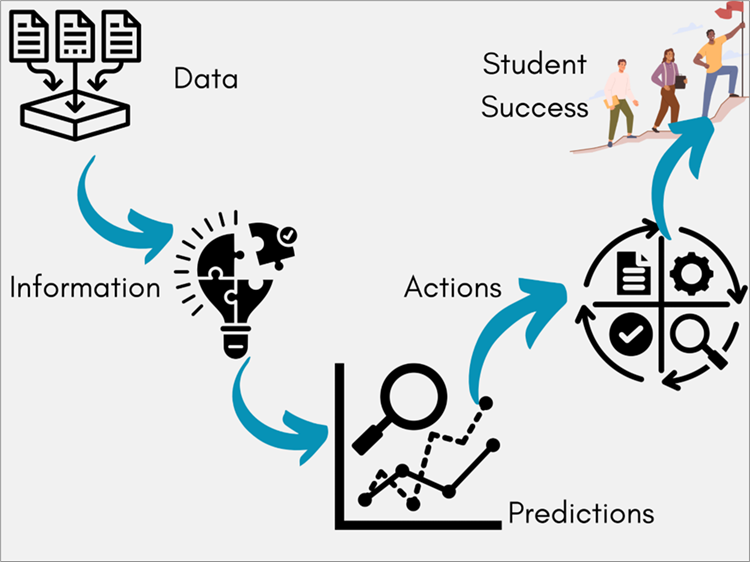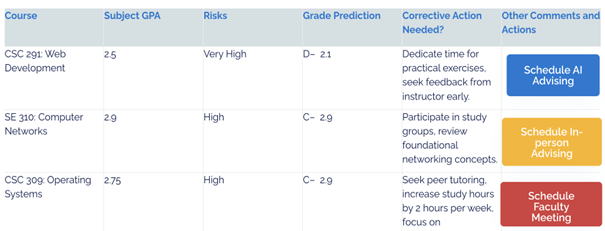On February 4, 2018, the Philadelphia Eagles faced the New England Patriots in Super Bowl LII, an underdog team pitted against a dynasty. With 38 seconds left in the second quarter, the Eagles found themselves at the Patriots' 1-yard line, fourth down. The decision here was critical; conventional wisdom might have called for a field goal to secure easy points before halftime. However, Eagles' head coach Doug Pederson, known for his bold strategies, called for a timeout.
In that moment, Pederson and his team made a decision that would forever be etched in NFL history, reminiscent of the coach in our narrative. Instead of playing it safe, he opted for creativity and risk, informed by a deep understanding of his team’s capabilities and the Patriots' tendencies, much like how educators might leverage AI to make informed decisions that defy conventional norms.
The Eagles executed the "Philly Special," a trick play in which the ball was snapped to the running back and passed to the tight end, who then threw it to quarterback Nick Foles for a touchdown. This play wasn't just a spur-of-the-moment decision; it was the culmination of meticulous study, practice and the courage to rely on data and preparation over tradition. The Eagles went on to win the Super Bowl, defying both odds and expectations.

AI and Higher Education
This real-world example mirrors the transformative potential of AI in higher education. Just as the Eagles' coaching staff leveraged their knowledge and preparation to make a game-changing decision, educators and administrators can use AI to uncover insights about learning patterns, predict student success, and tailor educational content to meet individual needs. The "Philly Special" was not merely a play; it was a statement about innovation, risk-taking, and the importance of data-informed decision-making.
In higher education, AI support mechanisms represent a similar leap of faith toward innovation. By adopting AI, educators can create personalized learning experiences, identify students who may need additional support, and optimize administrative processes, thereby enhancing educational outcomes. The courage to embrace AI, much like the decision to run the Philly Special, could redefine the education landscape, making learning more accessible, engaging, and effective.
In the evolving arena of education and work, Artificial Intelligence (AI) has the potential to lead the charge toward a more efficient, personalized, and innovative future. And just like the NFL, each player and every position assumes a critical role. In AI, technologies like Robotic Process Automation (RPA), insights from data analytics, engagement tools, and creative algorithms team up to transform how we learn, teach, and work.
When you read the more technical articles, it can be helpful to relate the technical terms to something you are familiar with, something fun. Again, relating them to football terms can give you an easy point of reference. So, here’s your team roster:
| Position | Player | AI Support System |
|---|---|---|
| Quarterback (QB) | The Student | LangChain |
| Wide Receivers (WR) | Teaching Assistants | Learning Support Platforms supported by APIs |
| Center (C) | Student Dashboards | RAP |
| Running Backs (RB) | Administrators, Advisors, and Staff | powered by RPA |
| Defensive Backs (DB) | Advisors, Faculty, Staff, | Complemented by RAG |
| Coaches | Teaching Faculty and Academic Advisors | Empowered by NLP[1] and LLM[2] |
Quarterback (QB) – The Student, supported by LangChain[3]
Just as a quarterback calls the plays, making strategic decisions that drive the team's movement down the field, students supported by LangChain act as the central command in navigating their academic journey. The platform analyzes and connects various student data points, guiding them through their education with personalized plans and support. The student will navigate the academic journey easily, much like a QB executing the game plan powered by analytics.
Wide Receivers (WR) – Teaching Assistants, supplemented by Learning Support Platforms, supported by API[4]s
Learning Support Platforms, enabled by APIs, function like wide receivers, who must effectively communicate and connect with the quarterback (student) and other teammates (Teaching Assistants and Tutors) to advance the ball (academic journey). Learning Support Platforms in the educational tech stack ensure seamless data exchange between different systems (e.g., Learning Management Systems and Student Information Systems), enabling smooth and coordinated student support.
[1] NLP: A language decoder or translator that understands and analyzes human language to improve student engagement.
[2] LLM: A large language model (LLM) is a type of artificial intelligence (AI) program that can recognize and generate text, among other tasks. LLMs are trained on huge sets of data — hence the name "large." LLMs are built on machine learning: specifically, a type of neural network called a transformer model.
[3] LangChain: LangChain provides tools and abstractions to improve the customization, accuracy, and relevancy of the information the models generate. For example, developers can use LangChain components to build new prompt chains or customize existing templates.
[4] API: A bridge or connector that enables different systems to talk to each other and share information seamlessly.
Center (C) – Student Dashboards, Powered by RAP[5]
The Remote Access Platform (RAP) can support Student Dashboards, just like the Analytics for the Center (C) in football. The dashboard supports the quarterback (student) and acts as the linchpin of the offensive line. RAP provides a central hub for students, offering remote access to a wide array of services and resources, akin to how the center provides stability and support for offensive plays.
Running Backs (RB) – Administrators, Advisors, Staff, powered by RPA[6]
Robotic Process Automation (RPA) mirrors the role of the analytical tools for Advisors, Faculty, and Staff. The running back takes on the most important task (like running through the defensive line) to gain yardage. Similarly, RPA can automate routine administrative tasks, effectively "breaking through" the workload to free up staff for more strategic initiatives.
Defensive Back (DB) – Advisors, Faculty, Staff, Complemented by RAG[7]
Retrieve-Analyze-Generate (RAG) acts like a defensive back, analyzing the "opposition" (in this case, data) to make strategic plays. By uncovering patterns and insights from student data, RAG informs interventions and support strategies akin to a DB analyzing opponents' strategies to defend against them.
Coach – Faculty, Advisors, empowered by NLP[8] and LLM[9]
[5] RAP: A virtual hub or portal that provides one-stop access to a range of student services and resources.
[6] RPA: A robotic assistant or automated workflow that streamlines repetitive tasks and frees up staff time.
[7] RAG: Retrieval-augmented generation (RAG) is an AI framework for improving the quality of LLM-generated responses by grounding the model on external sources of knowledge to supplement the LLM's internal representation of information.Aug
[8] NLP: A language decoder or translator that understands and analyzes human language to improve student engagement.
[9] LLM: A large language model (LLM) is a type of artificial intelligence (AI) program that can recognize and generate text, among other tasks. LLMs are trained on huge sets of data — hence the name "large." LLMs are built on machine learning: specifically, a type of neural network called a transformer model.
Natural Language Processing (NLP) is a communication tool that interprets and responds to the "language" of the student's success. In an educational context, NLP understands and processes student feedback and inquiries, ensuring that communications are effectively interpreted and acted upon.
The Large Language Model (LLM) is comparable to the analytics used by NFL coaches, offering personalized guidance and strategies about each "player" (student). By generating customized learning materials and feedback, the LLM adapts to individual needs, guiding students toward success, providing the information for the advisors (coaches), and tailoring strategies to his or her team's strengths.
This analogy should not only make the technical aspects of AI in education more relatable but also highlight the collaborative effort required to optimize student experiences, mirroring the teamwork and strategic play seen in NFL football.
GamePlays
Taking this one step further, you can even draw analogies between NFL game plays and student success interventions using AI:

Offensive Gameplays (Empowering Students):
● Hail Mary (Big Play for Graduation): Similar to a last-minute long pass to win the game, AI identifies and supports students who are close to graduation but may need an extra push, ensuring they successfully complete their courses and graduate on time.
● West Coast Offense (Short, Efficient Passes): Just like this strategy involves short, high-percentage throws to move down the field progressively, AI offers bite-sized, personalized learning modules that build upon each student's knowledge and skills steadily towards their academic goals.
● Read Option (Student Pathway Choices): Similar to a quarterback deciding whether to keep the ball or hand it off based on the defense's reaction, and AI helps students navigate their academic and career options, offering suggestions based on real-time data and outcomes to choose the best path forward.
Defensive Plays (Risk Management Strategies):
● Blitz (Identifying At-Risk Students): In football, a blitz is a sudden, aggressive move to tackle the quarterback. Analogously, AI proactively identifies students at risk of dropping out or failing, swiftly intervening with academic support and resources.
● Zone Defense (Broad Support Strategies): Like covering areas of the field rather than individual opponents, AI deploys wide-ranging support mechanisms (tutoring, mental health support, etc.) to safeguard the student body against common challenges, helping to ensure no student falls through the cracks.
● Play Action Pass (Engaging Disengaged Students): Like a play that starts as a run but turns into a pass, AI initially engages students with standard support, then surprises them with customized, engaging content and interventions tailored to their interests, re-engaging those who may have disengaged from their studies.
A Future Powered by AI and Education
Just as in football, where victory requires adaptability, teamwork, and strategic planning, the successful integration of AI into education demands a coordinated effort to leverage each technology's strengths.
AI will expedite student graduations, enhance the advisory process, and enable Leaders of Higher Education (Presidents/Chancellors) to gauge campus efficiency and contribute to global change. These challenges include data integration, ensuring security, and utilizing AI to create a secure, intelligent environment. The result will simplify administrative processes, improve learning outcomes, and offer insights for decision-making. By integrating various data sources and systems, AI can provide personalized recommendations and actions, from course registration to financial aid management.
For advisors, AI offers tools to identify at-risk students early by analyzing data from multiple sources, thereby enabling timely intervention. This approach extends beyond traditional early alert systems, offering more nuanced and comprehensive insights into student needs and potential challenges.
Additionally, AI’s capabilities in generating custom content and analytics can support instructors in creating unique learning experiences and help administrators in strategic planning and performance evaluation. AI’s ability to connect to and leverage data from student information systems (SIS) and learning management systems (LMS) ensures it can provide tailored support to each institution.
As it stands now, AI represents a significant yet easy-to-integrate light leap forward in enhancing higher education processes, offering a range of benefits, from operational efficiency to enhanced learning experiences.
Final Thoughts
Through personalized learning, predictive analytics, and streamlined administrative processes, AI has the tools to support higher education personnel towards a brighter future for learning and work. Using these tools, our educators and institutions can navigate the changing complexities of modern education, making learning more engaging, effective, and accessible. The integration of AI support mechanisms, much like the intricacies of a well-executed football play, requires teamwork, strategic planning, and a commitment to leveraging technology's strengths to enhance educational outcomes. As we move forward, the courage to adopt and adapt AI technologies will be critical in defining the success and resilience of our educational institutions through the remainder of the 21st century, ensuring they remain as dynamic and impactful as the game-changing "Philly Special” we all remember.
About the authors

Kiran Kodithala is a technology leader and a seasoned expert in the field of educational technology. As the founder and CEO of N2N Services Inc. since 2010, Kiran has been at the forefront of driving innovation in higher education through technology. Under Kiran's leadership, N2N Services Inc. has grown to become a leading integrator providing cutting-edge solutions to the challenges faced by educational institutions. His passion for integrating technology into education has led to the development of transformative products like Illuminate and LightLeap.ai.

Lee D. Lambert is Chancellor of the Foothill-De Anza Community College District. Lambert is a visionary leader who has served as a senior-level community college executive for over two decades.
Prior to Foothill-De Anza, Lambert served as chancellor of Pima Community College in Tucson, Arizona, where he led a transformation of the college into Centers of Excellence in applied technology, health care, hospitality, information technology and cybersecurity, public safety, and the arts.











